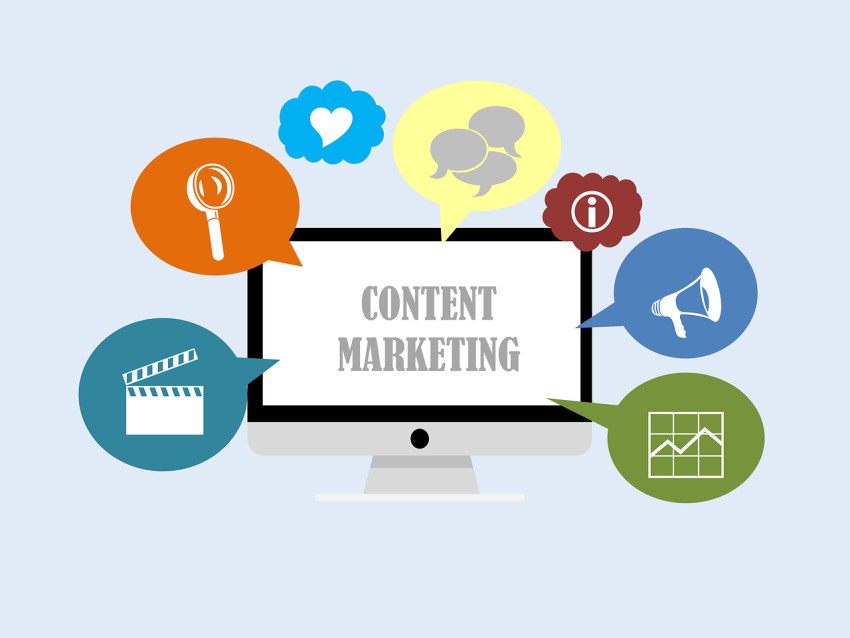
Content marketing has become an essential component of any successful marketing strategy. In today's digital age, consumers are constantly bombarded with advertisements and marketing messages. To stand out from the competition, businesses must provide valuable and engaging content that resonates with their target audience.
One of the main benefits of Content Marketing is its ability to build brand awareness and trust. By consistently delivering high-quality content, businesses can establish themselves as industry leaders and experts in their field. This not only helps attract new customers but also fosters loyalty among existing ones.
Additionally, content marketing allows businesses to connect with their target audience on a deeper level. By creating content that addresses their pain points, answers their questions, and provides solutions to their problems, businesses can establish a genuine connection with their customers. This connection builds trust and loyalty, ultimately leading to increased customer retention and advocacy.
Understanding Your Target Audience
Before diving into creating a content marketing plan, it's crucial to have a clear understanding of your target audience. Who are they? What are their interests, needs, and pain points? By gaining a deep understanding of your target audience, you can tailor your content to resonate with them and provide real value.
Start by conducting market research and creating buyer personas. Buyer personas are fictional representations of your ideal customers and help you understand their demographics, behaviors, motivations, and goals. This information will guide your content creation process and ensure that your content is targeted and relevant.
In addition to market research, it's also important to listen to your audience. Engage with them on social media, forums, and other platforms to gain insights into their preferences and needs. By actively listening to your audience, you can identify trends, challenges, and opportunities that can inform your content strategy.
Setting Goals for Your Content Marketing Plan
To create a successful content marketing plan, it's essential to set clear and measurable goals. What do you want to achieve through your content marketing efforts? Your goals could include increasing brand awareness, generating leads, driving website traffic, or boosting customer engagement.
When setting goals, make sure they are specific, measurable, attainable, relevant, and time-bound (SMART). For example, instead of setting a generic goal like "increase website traffic," a SMART goal would be "increase organic website traffic by 20% within six months."
By setting SMART goals, you can track your progress, evaluate the effectiveness of your content marketing efforts, and make data-driven decisions to optimize your strategy.
Conducting Keyword Research for Content Ideas
Keyword research is a crucial step in content creation. By identifying the keywords and phrases that your target audience is searching for, you can create content that aligns with their interests and needs.
Start by brainstorming a list of relevant topics and themes related to your industry. Then, use keyword research tools like Google Keyword Planner, SEMrush, or Ahrefs to identify the search volume and competitiveness of these keywords.
Focus on long-tail keywords, as they are more specific and targeted. These keywords usually have lower search volumes but higher conversion rates, as they reflect the intent of the searcher more accurately.
Once you have a list of keywords, incorporate them naturally into your content. However, avoid keyword stuffing, as it can negatively impact the readability and user experience of your content.
Creating a Content Calendar
A content calendar is a valuable tool that helps you plan and organize your content creation efforts. It provides a clear roadmap of what content needs to be created, when it needs to be published, and who is responsible for its creation.
Start by determining your desired publishing frequency. How often do you want to release new content? This could be weekly, bi-weekly, or monthly, depending on your resources and audience preferences.
Next, identify key dates, events, and holidays that are relevant to your industry. These can serve as inspiration for content ideas and help you stay ahead of the curve.
Once you have a clear idea of your content schedule, use a calendar tool, such as Google Calendar or Trello, to create a visual representation of your content plan. Assign specific tasks and deadlines to team members to ensure smooth execution.
A content calendar helps you maintain consistency and ensure that your content is delivered on time, keeping your audience engaged and coming back for more.
Types of Content to Include in Your Plan
When creating a content marketing plan, it's important to diversify your content types to cater to different audience preferences and consumption habits. Here are some popular content formats to consider:
Blog Posts: Informative articles that provide valuable insights and solutions to your audience's problems.
Videos: Engaging and visual content that can be shared on platforms like YouTube, Instagram, and TikTok.
Infographics: Visual representations of complex information or data that are easy to understand and share.
Ebooks and Whitepapers: In-depth resources that provide comprehensive information on a specific topic.
Webinars and Podcasts: Live or recorded presentations that offer expert insights and foster audience engagement.
Case Studies and Success Stories: Real-life examples that showcase how your products or services have helped customers achieve their goals.
By diversifying your content, you can reach a wider audience and cater to different learning styles and preferences.
Crafting Compelling Headlines and Titles
The headline or title of your content is the first thing that grabs your audience's attention. It's crucial to craft compelling and attention-grabbing headlines that entice your audience to click and engage with your content.
Start by understanding the psychology of headline writing. Incorporate power words, such as "ultimate," "essential," "proven," or "exclusive," to create a sense of urgency and value. Use numbers and statistics to convey credibility and tangibility.
Additionally, focus on creating clear and concise headlines that accurately reflect the content of your piece. Misleading or clickbait headlines may attract initial clicks but can damage your brand reputation in the long run.
Experiment with different headline styles and test their effectiveness through A/B testing. Monitor the click-through rates and engagement metrics to identify the headlines that resonate the most with your audience.
Remember, your headline is the gateway to your content. Make it compelling, intriguing, and irresistible.
Optimizing Your Content for SEO
To maximize the visibility and reach of your content, it's important to optimize it for search engines. Search engine optimization (SEO) involves strategically incorporating relevant keywords and optimizing various on-page elements.
Start by including your target keywords in the title, meta description, headers, and body of your content. But be cautious not to overstuff your content with keywords, as it can negatively impact the readability and user experience.
Optimize your images by using descriptive filenames and alt text that includes relevant keywords. This helps search engines understand the context and relevance of your images.
Additionally, ensure your content is mobile-friendly, as more and more users are accessing content through mobile devices. Optimize your website's loading speed, improve its mobile responsiveness, and use responsive design elements.
Regularly monitor your website's performance using tools like Google Analytics and Google Search Console. Analyze the traffic sources, user behavior, and conversion rates to identify areas for improvement and optimize your content strategy.
Promoting and Distributing Your Content
Creating great content is only half the battle. To unlock its full potential, you need to promote and distribute it effectively.
Start by leveraging your existing channels, such as your website, blog, email newsletter, and social media profiles, to share your content with your audience. Encourage your followers and subscribers to share your content with their networks, expanding your reach organically.
Additionally, consider guest posting on reputable industry websites and blogs. This allows you to tap into new audiences and build credibility by associating your brand with established thought leaders.
Collaborate with influencers who align with your brand and target audience. Their endorsement and promotion can significantly boost the visibility and credibility of your content.
Finally, consider investing in paid promotion channels, such as social media advertising or search engine marketing. These channels allow you to target specific demographics, interests, and behaviors, ensuring that your content reaches the right audience.
Remember, effective content promotion and distribution can significantly amplify the impact of your content marketing efforts.
Measuring the Success of Your Content Marketing Plan
To evaluate the effectiveness of your content marketing plan, it's crucial to measure key performance indicators (KPIs) and track your progress.
Start by identifying the KPIs that align with your goals. These may include website traffic, lead generation, conversion rates, social media engagement, or brand mentions.
Use web analytics tools like Google Analytics or social media analytics tools to track your KPIs and gather data. Analyze the trends, patterns, and insights to gain a deeper understanding of your audience's behavior and preferences.
Regularly review your content performance against your goals and make data-driven decisions to optimize your strategy. Experiment with different content formats, topics, and distribution channels to identify what resonates the most with your audience.
Adjusting and Refining Your Plan
As the digital landscape constantly evolves, it's important to continuously adjust and refine your content marketing plan. Regularly assess your plan's effectiveness, identify areas for improvement, and adapt to the changing needs and preferences of your target audience.
Stay updated with the latest industry trends, news, and technologies. Embrace emerging content formats and platforms to stay ahead of the competition and keep your content fresh and engaging.
Listen to your audience and gather feedback through surveys, comments, and social media interactions. Use this feedback to refine your content strategy and create content that truly resonates with your audience.
Regularly communicate and collaborate with your team to ensure everyone is aligned with your content marketing goals and strategy. Share learnings, insights, and best practices to foster a culture of continuous improvement.
Conclusion
Creating a successful content marketing plan requires careful planning, understanding your audience, and delivering valuable and engaging content. By following the steps outlined in this article, you can unlock the power of content and drive meaningful results for your business.
Remember, content marketing is an ongoing process that requires constant monitoring, adjustment, and refinement. Stay agile, adapt to changes, and consistently deliver high-quality content that resonates with your audience.
By investing in a well-executed content marketing plan, you can build brand awareness, establish trust, and drive long-term growth for your business.
Unlock the power of content today and take your marketing efforts to new heights.




